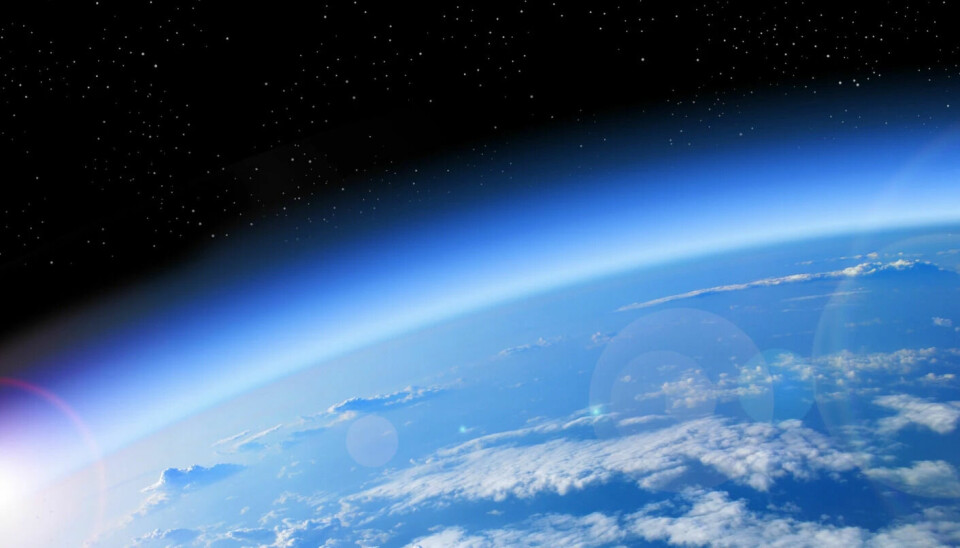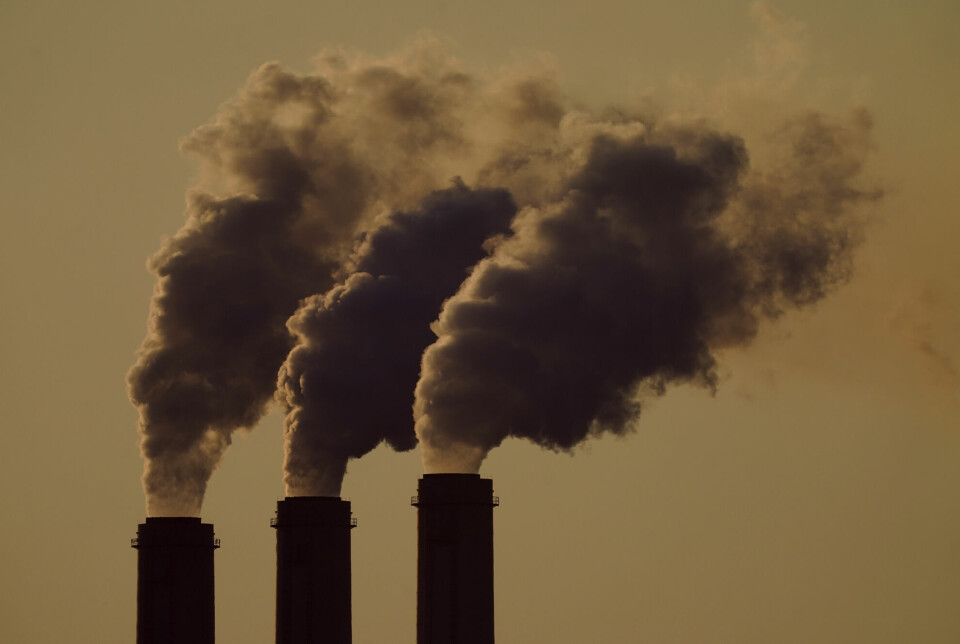
The Earth traps more heat than before. This is partly due to cleaner air
There is a growing imbalance in how much energy the Earth receives and emits back.
Astonishing results from 2021 showed that the Earth's energy imbalance has doubled since 2005. This was reported by NASA, among others.
The Earth retains more heat than before. Sun rays enter, and less of the energy escapes back out.
“There has been a lot of debate about what drives the increase in energy imbalance measured by satellites. There has been a tremendous increase,” says Øivind Hodnebrog, a climate researcher at CICERO Center for International Climate Research.
He has contributed to a new study of the causes. It turns out that cleaner air can explain 40 per cent of the increase.
Should be in balance
The energy balance is like the Earth’s energy budget, Hodnebrog explains.
Since the year 2000, satellites have measured how much radiation from the Sun enters the Earth and how much radiation is released back into space.
“This should be in balance so that the climate doesn’t change,” he says.
The radiation coming from the Sun is unchanged, except for minor changes through the solar cycles. But the Earth captures and retains more energy than before.

“The main reason for this is the greenhouse effect. We have seen an increase in greenhouse gases like CO2 and methane,” the researcher says.
But this cannot explain the entire increase.
Reflects sunlight
In the study, Hodnebrog and his colleagues used four of the latest climate models, which were also used by the UN’s Intergovernmental Panel on Climate Change.
It turned out that less air pollution plays a significant role.
“We use model data and compare it with satellite measurements. We had to include a reduction in particle emissions to match the satellite measurements,” Hodneborg says.
It is already established that sulphur particles and some other types of air pollution cool the planet.
“Some of the warming has been masked by emissions of cooling particles. It's because they’re bright and reflect the solar radiation. They also make clouds appear whiter,” he says.
Less air pollution
The cooling air pollution mainly comes from industry and coal-fired power plants.
“In the last century, emissions of these cooling particles increased,” says Hodnebrog.
Air pollution is known to have negative health effects. As a result, stricter regulations have been implemented.
Air pollution has decreased in many countries. Europe and North America have reduced emissions of sulphur dioxide and other particles. In the last 10 to 15 years, China has also reduced its particle emissions, says Hodnebrog.
Particles have a short lifespan in the atmosphere. They stay there for only a few days. When fewer are emitted, it has an immediate effect on how much heat reaches the Earth.

Surprisingly large effect
Cleaner air can explain as much as 40 per cent of the increased energy imbalance on the planet, the researchers found.
“We expected to see this transition from a cooling to warming effect from the particles. But it was surprising that it had such a large effect over the last 20 years or so,” says Hodnebrog.
The particles don’t inherently cause warming. Rather, it's the disappearance of their cooling effect that's noteworthy.
Hodnebrog still does not think the world should stop improving air quality.
“Poor air quality is a major problem today, leading to several million additional deaths globally each year. It’s very important to clean this up. At the same time, it’s important to reduce greenhouse gases as much as possible,” he says.
Captures more of the energy
Melting ice is another reason the energy imbalance has increased. Sea ice and ice are white surfaces on the Earth that reflect radiation.
When these areas become dark, they absorb energy instead.
The main reason for the energy imbalance is greenhouse gases.
“We continue to emit more CO2 and other greenhouse gases. And this leads to more of the radiation staying in our climate system. That effect has steadily increased,” says Hodnebrog.
The energy imbalance is the reason the climate is getting warmer.
“When you have more energy coming in than out, the Earth's response is to increase the temperature. The temperature will rise until the energy budget is balanced again, and we reach a new equilibrium,” he says.
90 per cent of the extra energy is absorbed by the ocean. It is not the case that an increased imbalance immediately leads to a higher average temperature.
“It takes time to warm up the ocean. There’s a delay there. It’s not a one-to-one relationship between energy imbalance and temperature increase,” says Hodnebrog.
Will increase the temperature over time
Has the improvement in air quality already contributed to driving up the global average temperature?
The researchers cannot quantify this yet, because there is a delay between the increase in energy imbalance and the change in temperature, says Hodnebrog.
“But the reduced particle emissions will over time lead to an increase in ground temperature on Earth, to the same extent as they have already led to cooling,” he says.
Most viewed
Disagreement on whether warming is accelerating
Some researchers, like James Hansen from the USA, believe that global warming is now accelerating and happening faster. Others disagree with this, according to The Guardian.
Tore Furevik, a climate researcher and director of the Nansen Centre, has elaborated on what the discussion is about in a previous article on forskning.no (link in Norwegian).
“It’s a fact that the energy imbalance is getting larger and larger. There’s an acceleration in the amount of heat that the Earth absorbs or captures,” Furevik said.
Most of this heat goes into the ocean. It takes a long time to warm the ocean, and it responds slowly.
“It's possible to envision the imbalance growing progressively more significant without it being apparent in the surface temperature readings,” he said.
In statistical data, there is no clear evidence that the temperature increase is accelerating, i.e., that it has started to go faster than a few years ago, he said.
Temporary acceleration is possible
Øivind Hodnebrog says it is true that there is a discussion about whether warming will accelerate going forward.
“These particles play a key role here. In the article, we don’t write that it will lead to accelerated warming, but that it can do so,” he says.
“As we continue to reduce particle emissions and also continue to increase greenhouse gas concentrations, we get an even greater energy imbalance, which in turn is what drives the increase in temperature.
“There's a possibility of experiencing a temporary spike in warming rates until emissions of these particles are effectively mitigated.”
———
Translated by Alette Bjordal Gjellesvik
Read the Norwegian version of this article on forskning.no
Reference:
Hodnebrog et al. Recent reductions in aerosol emissions have increased Earth’s energy imbalance, Communications Earth & Environment, vol. 5, 2024. DOI: 10.1038/s43247-024-01324-8




































